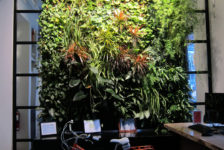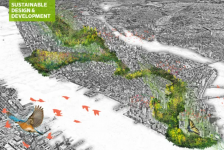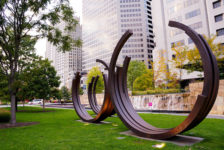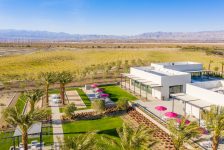Butterfly Bridge by Dietmar Feichtinger Architects, in Christianshavn Canal and Trangraven, Copenhagen, Denmark. The capital and most populated city of Denmark is Copenhagen, one of the oldest capitals in Europe and part of the most dynamic region too. In the 10th century, Copenhagen used to be a Viking fishing village surrounded by rivers. Its name in Danish reflects, in fact, its origin as a harbor and place of commerce. Copenhagen is located on the eastern edge of the island of Zealand and partly situated on the island of Amager, (these two are connected by five bridges) and on a number of natural and artificial islets between them. It is also part of the Øresund, commonly known as “The Sound” in English, which is the strait that separates Denmark from Sweden, specifically the Danish island Zealand from the southern Swedish province of Scania. One of the Most Environmentally Friendly Cities in the World Copenhagen is one of the most environmentally friendly cities in the world, by using renewable energy such as solar panels, recycling rainwater, green roof and efficient waste management solutions, reducing electricity consumption and also by reducing considerably the use of private transportation. By 2025, 75% of trips could be made on foot, by bike or by using public transportation.

Cykelslangen in Copenhagen, making sustainable travel possible. Credit: DISSING+WEITLING
It is recognized that the architectural planning authorities are taking a full commitment account of these environmental activities that have become a priority nowadays, Copenhagen has been ranked as the top Green City for the second time in the 2014 Global Green Economy Index (GGEI) and received the title of “European Green Capital 2014” as the result of its environmental record and its ambitious goals.
The Butterfly Bridge
The Butterfly Bridge is the most recent example of this environmental commitment. It is a lightweight foot and cycle bridge designed by the French firm Dietmar Feichtinger Architects finished in January 2015. The bridge connects Christianshavns Kanal and Trangraven, it’s designed as a three linear bridge, adapting itself to every individual situation of the canals.

The Butterfly Bridge. Photo credit: Christian Lindgren
It takes its name because of the two spans that can be opened independently of each other for passing sailboats, when both of the spans are open at the same time; they form the figure of a butterfly and serve as barriers, which allow the bridge to function to and from Islands Plads. The opening width of the “wings” is 15m and the length from the pivot point to the flap tip is 23,3m.
Related Articles:
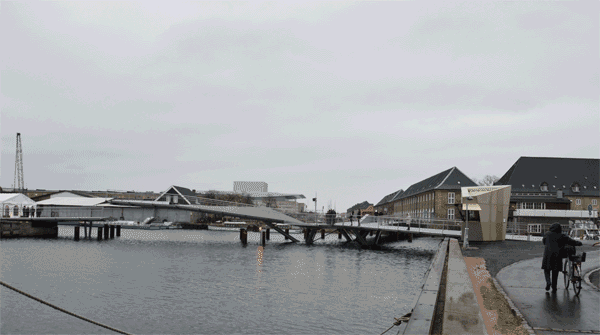
Photo compilation of The Butterfly Bridge. Photo credits: Barbara Feichtinger-Felber
The main structure is made of steel and it consists on a single web, continuous T-beam; As the authors said: “
The beam web, which extends over the entire bridge, is built of a trapezoidal, for reasons of corrosion protection hermetically welded hollow section”. The structural system of the bridge flaps corresponds in a closed state to this single-span beam with a supportive structure which is restrained on one side (platform side) and pinned and supported on the other side (ramp to the shore). In an open state the bridge flap corresponds to a clamped cantilever.
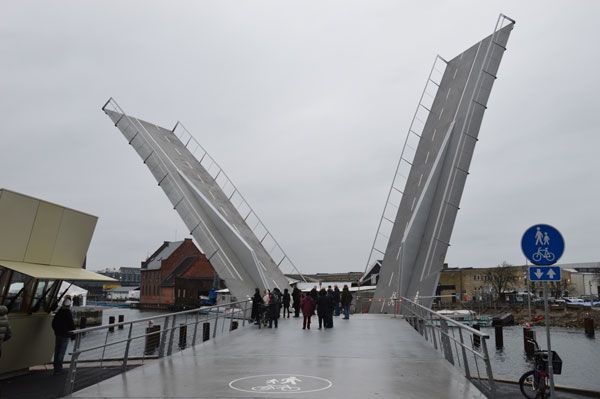
The Butterfly Bridge. Photo credit: Barbara Feichtinger-Felber
The anchor point of the hydraulic cylinder is about 5 m from the axis of rotation; the axis and its support are part of the central pedestal. The hydraulic cylinders are stored on the pile cap of the center landing. When closed, the flap tip rests on the opposite shore-side bridge. The Central platform with the onshore connection consists of two pivot axes and an onshore linkage which are connected with the central platform. The rigid plate construction consists of the central webs of the bridge meeting in the middle and a peripheral edge support that holds the cross-sectional shape of the bridge.
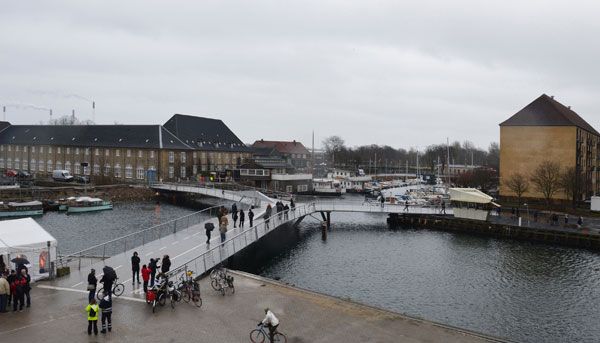
The Butterfly Bridge. Photo credit: Barbara Feichtinger-Felber
Directly below the axes of rotation, as well as under the bearing of the onshore connection, three pillar couples with V-shaped arranged columns. The storage of the superstructure of the onshore connection to the abutment is made on elastomeric slide bearings. It has been designed as a light and removable onshore connection; the ramp can be easily removed and modified in the event of a widening of the road on the embankment, a renovation or even a general overhaul of the existing walls.
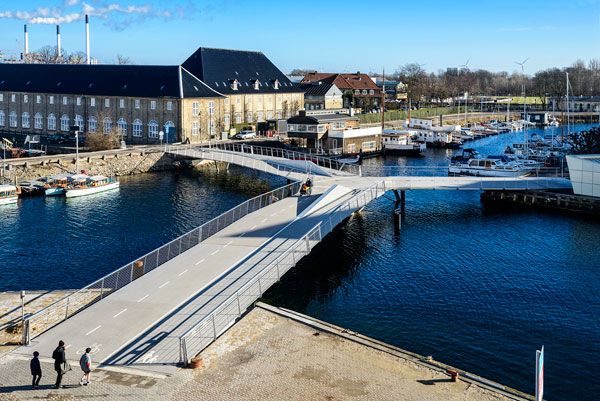
The Butterfly Bridge. Photo credit: Christian Lindgren
The wide central platform of the bridge becomes an unsuspected addition of public space and potential informal gatherings, by night, the illumination changes and with it, the perception of the users. The Butterfly Bridge is a very functional and clean design; it combines both architecture and engineering as one and reflects the environmental essence and commitment to the city and its inhabitants. Copenhagen is emphasizing the design of the city planning, encouraging cycling and walking rather than driving, they are focusing their efforts to increase the proportion of the population cycling to work to 50% this year; this should be the main goal for all the cities, at least the more populated ones.
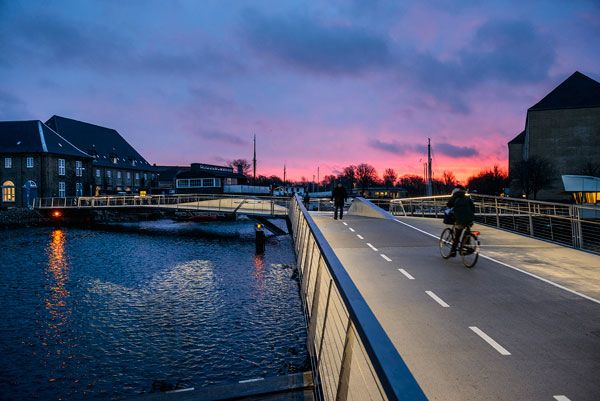
The Butterfly Bridge. Photo credit: Christian Lindgren
Butterfly Bridge
Location: Christianshavn Canal and Trangraven. Copenhagen, Denmark
Designers: Dietmar Feichtinger Architects
Project team: Ulrike Gabriel (Leader planning), Guillaume Buton, WTM Engineers GmbH (Engineering), Schippke (Aerodynamics).
Construction: 2009
Completion: 2015
Budget: 4.7M €
Length: 63m
Recommended Reading:
Article by Tahío Avila
Return to Homepage
Published in Blog










